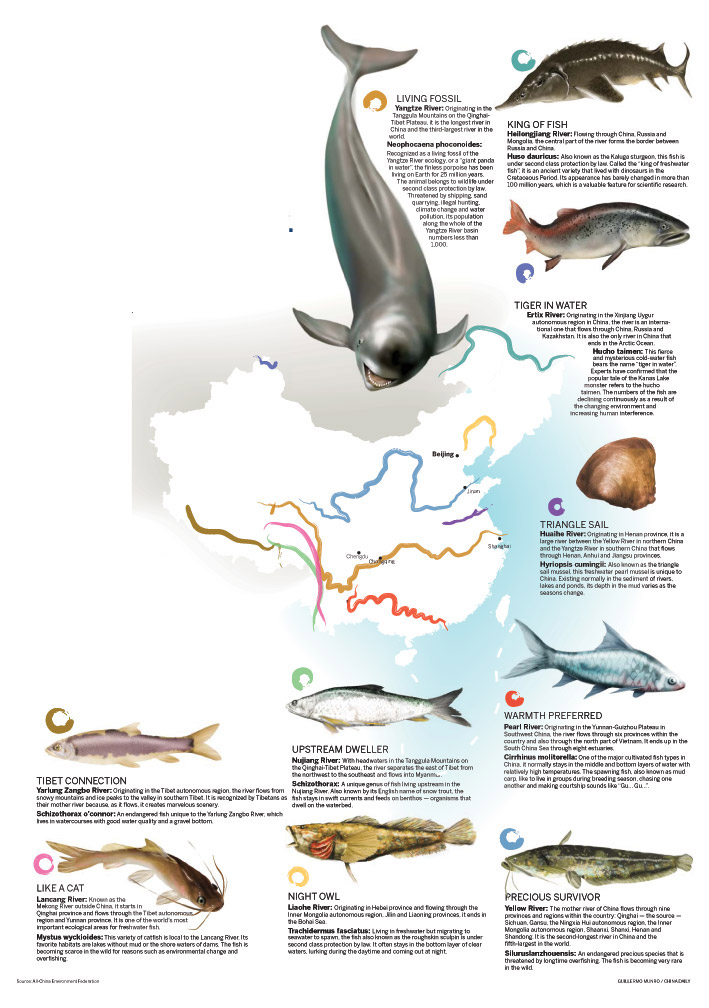|
 |
Mini-posters draw attention to 10 of China's aquatic animal species and habitats that are endangered by human activity, Wu Wencong reports in Qingdao, Shandong province.
Ten aquatic animals, each representing a river, have been chosen by environmental experts - with help from the public - to raise awareness of endangered creatures and their habitats.
Officials from the Environmental Protection Ministry, the Agriculture Ministry and the Water Resources Ministry put the 10 animals on cards, each of which serves as a sort of mini-poster representing endangered life in one of the country's major rivers.
The announcement was made as part of the celebration of 2014 International Biodiversity Day on May 22 in Qingdao, Shandong province.
The status of aquatic organisms is an important indicator of whether the ecological condition of a river is healthy or not, said Li Yanliang, deputy director general of the fisheries bureau of the Agriculture Ministry.
Starting in May 2013, 250,000 netizens from 22 provinces voted online to nominate key rivers and animals. Experts chose the 10 finalists in March.
"The animals and rivers were chosen using several criteria. For the rivers, major requirements included the length, the width of the river basin and the abundance of species. Animals had to be precious and unique to China or the region, with lives under threat because of human activities," said Jiang Zuofa, a researcher at the Heilongjiang Fisheries Research Institute from the Chinese Academy of Fishery Sciences.
Most of the chosen aquatic organisms now suffer from declining populations and shrinking habitats, said Jiang, who has 40 years of experience in the field.
For example, he said, the large predatory sturgeon (huso dauricus) found in the Amur River basin - claimed to be the largest freshwater fish in the world, with a length of up to 5.6 meters - usually needs 17 years to reach maturity. One of these fish, if healthy, can weigh as much as 200 kilograms.
But now the sturgeon, which are often caught by fishermen, come in at under 50 kg, which is the normal weight of a baby specimen.
Jiang said that water pollution and a variety of construction projects along China's rivers have changed the environment in which many fish once thrived, and have hastened their decline.
"Countermeasures being taken include bans on construction and fishing in protected areas," he said. "Currently there are more than 600 protected areas."
The 10 mini-posters commemorating the selected species aim to draw public attention to the problem. The next step will be a thorough investigation of each river and a summary description of the problems it faces.
A workshop focusing on cities and biodiversity was also held on Biodiversity Day, with the participation of officials from many Asian countries.
"Urbanization in China will reach 65 percent by 2030. Biodiversity may be threatened during this process," said Li Ganjie, the vice-minister of environmental protection, who called on all Asian countries to share their experiences on how to conserve threatened species and habitats during urbanization.
Contact the writer at wuwencong@chinadaily.com.cn
|
|
|
|
|
|
|
|